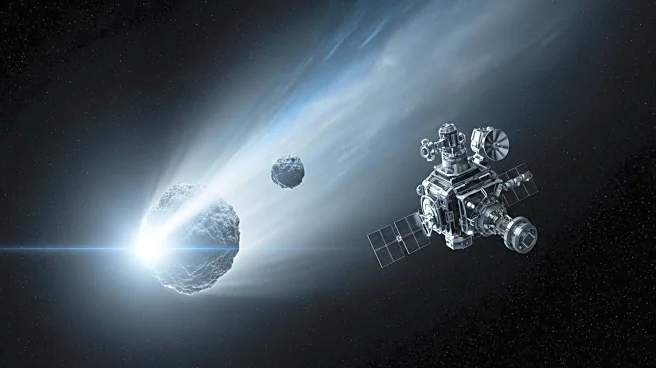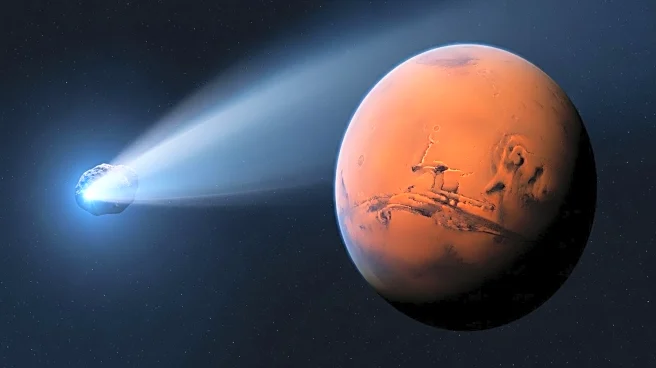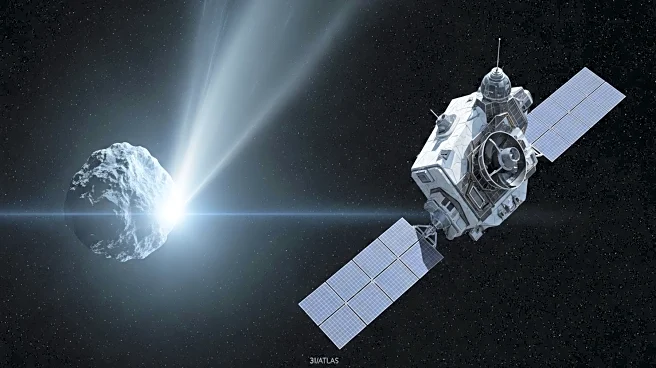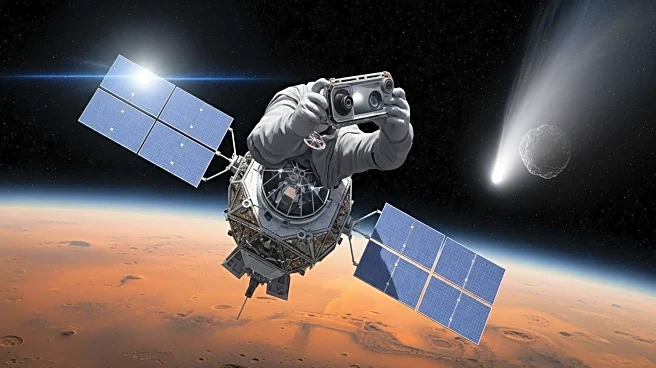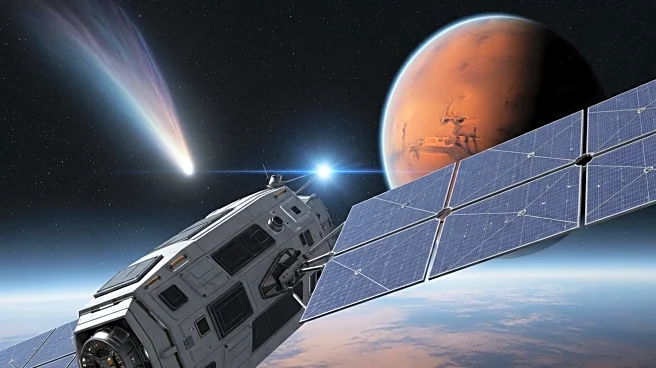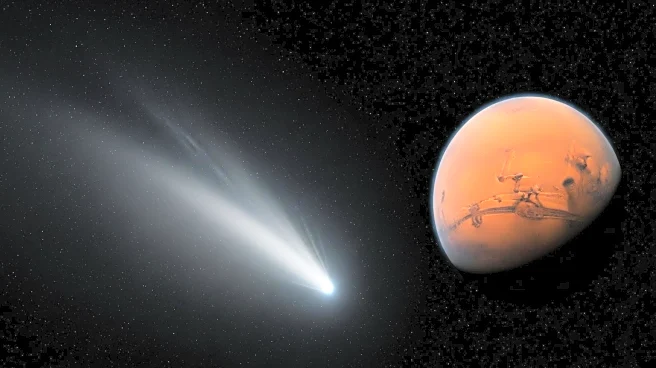What's Happening?
The interstellar comet 3I/ATLAS is currently passing through the solar system, bounded by the orbits of Mars and Earth. Despite its massive size, estimated at over 33 billion tons, the comet exhibits relatively weak gravitational forces. The escape speed from 3I/ATLAS is calculated to be between 1.3 and 12 meters per second, depending on its diameter, which ranges from 5 to 46 kilometers. This escape speed is comparable to the running speed of Usain Bolt, the world record holder for the 100-meter dash. The comet's rotation period is 16.16 hours, resulting in a surface rotation speed significantly lower than the threshold needed to break up a comet nucleus bound by gravity. The gravitational influence of 3I/ATLAS on Mars, as it passed at a speed of 67 kilometers per second, was negligible, amounting to an unmeasurable velocity kick.
Why It's Important?
The passage of 3I/ATLAS through the solar system provides a unique opportunity to study interstellar objects and their gravitational characteristics. Understanding the weak gravitational influence of such massive objects can offer insights into the composition and structure of comets and other celestial bodies. This knowledge is crucial for astronomers and astrophysicists as they seek to understand the dynamics of interstellar objects and their potential impact on planetary systems. The public interest in 3I/ATLAS highlights the fascination with interstellar phenomena and the ongoing quest to explore the cosmos.
What's Next?
As 3I/ATLAS continues its journey through the solar system, astronomers will likely conduct further observations to refine estimates of its size, composition, and gravitational effects. These studies may contribute to broader research on interstellar objects and their interactions with solar system bodies. The comet's trajectory and behavior could also inform future missions aimed at exploring or intercepting interstellar objects. Continued public interest and scientific inquiry into 3I/ATLAS may drive advancements in space exploration technologies and methodologies.
Beyond the Headlines
The study of 3I/ATLAS raises questions about the nature of interstellar travel and the potential for future encounters with similar objects. The comet's weak gravitational influence, despite its size, challenges conventional understanding of celestial mechanics and may prompt reevaluation of theories related to cometary structure and behavior. Additionally, the public's fascination with 3I/ATLAS underscores the cultural and scientific significance of interstellar exploration, potentially inspiring new generations of scientists and explorers.



